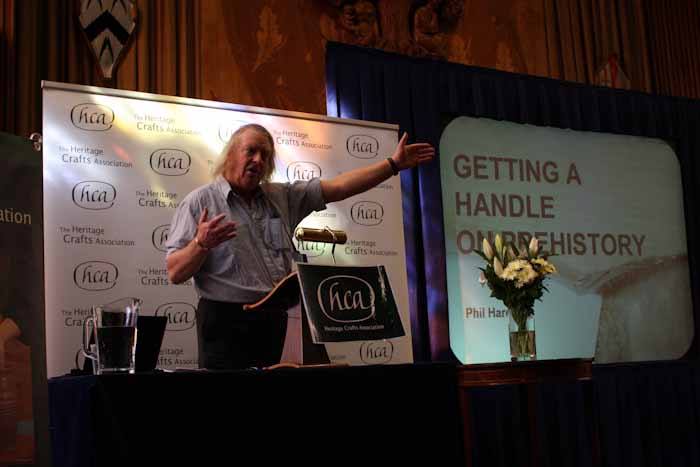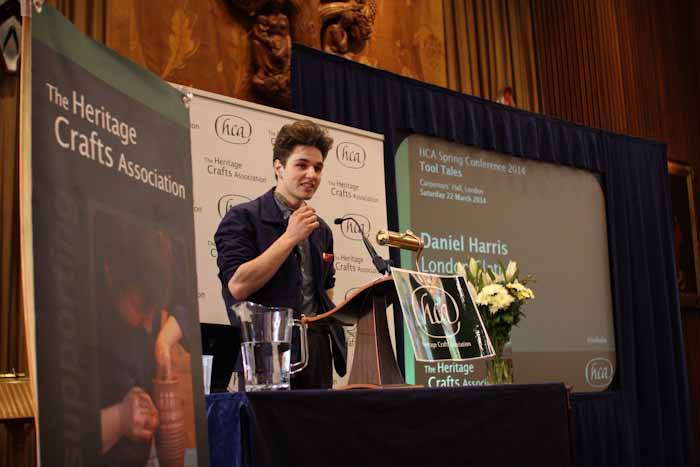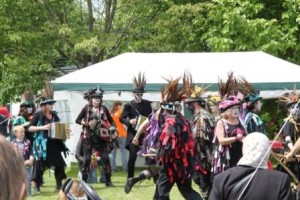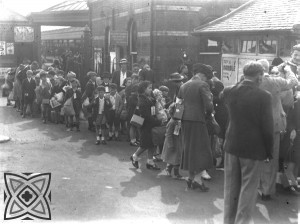Earlier this week I spent four days in beautiful Sussex, three of them at the Weald & Downland Museum in Singleton.
I’ve been wanting to make a coracle for years (no idea why!) and finally got the chance this weekend at the Weald & Downland (a fantastic place for craft courses!). Coracles are found across the world and are often one-person vessels used for fishing. In Britain, the wooden framework of coracles would originally have been covered with animal skins, but are today covered with calico or canvas which is waterproofed with bitumen paint. The design of coracles varied across Britain; we have two in the MERL collection – one is made of ash laths woven together (MERL 56/187) and the other is made of a hazel and willow frame (MERL 60/535). Traditionally two coracles would work together when fishing, with the fisherman in each vessel steering with the paddle in one hand whilst holding onto the net stretched out between them with the other. Turns out there’s a coracle museum in Cenarth in Wales!

My coracle at the end of the course – it still needs waterproofing and a bit more woodwork and then we’re ready to paddle!
The course was run by Kevin Grimley, with the help of his son Nathan, and was absolutely brilliant. The first day was spent constructing the wooden frame of our coracles (with the aid of some power tools). The frame is made of ash laths, constructed around the pine seat. I was a bit worried about lagging behind everyone else as it’s been years since I’ve done much woodwork, but my practice drilling, hammering and sawing a few weeks ago stood me in good stead!
On the second day, we covered the frame in calico – pulling it taut and stapling it to the rim, and then stitching the seams. We need to finish our coracles off at home with a few layers of bitumen paint and then another lath around the inside and outside of the rim.
Because ours wouldn’t be finished over the weekend, Kevin had brought along some completed coracles for us to have a go in on the Museum’s mill pond – it was great fun! The coracle felt quite stable, but the figure-of-eight paddling takes a little getting used to. Can’t wait to have a go in mine when it’s done!
I was then back at the Weald & Downland on Tuesday for a conference on ‘The history of woodworking tools’, which was held in collaboration with the Tools and Trades History Society (TATHS) in celebration of the 50th anniversary of W. L. Goodman’s seminal book of that name. It was a great conference (although I didn’t quite fit the typical delegate demographic) and was divided into the sections of Goodman’s book – rules and measures, compasses and squares, boring tools (or ‘not so boring tools’), trestles and benches, saws, planes, edge tools, and chisels and gouges.

I really liked the portable display cases that TATHS used. This display was entitled ‘Not so boring tools’!
As ever, when I attend these kinds of things, I realise how little I knew when I did the A Sense of Place cataloguing and how many mistakes I must have made. My latest wish is to have the time to spend focusing on tool manufacturers – looking at the objects, noting down the manufacturer’s marks, cross-referencing them with the various permutations of manufacturer’s names over the years and trying to date them. Alas, I doubt I’ll ever have the time! The first speaker, Jane Rees, made a very good point – that a lot of the detailed research into the subject of the conference is done by dedicated and interested amateurs, rather than museum professionals or academics and I know why – we just never have the time (especially when working on a project basis!).


















